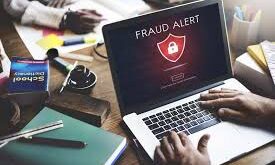Credit Bureau Removal Services: How to Clean Up Credit Report . Your credit report plays a crucial role in determining your financial health. If there are errors, outdated information, or inaccurate negative items, they can lower your credit score and impact your ability to secure loans, credit cards, or even rental agreements. This is where credit bureau removal services come into play. In this comprehensive guide, we will explore how these services work, their benefits, and tips for removing negative marks from your credit report legally and efficiently.
What Are Credit Bureau Removal Services?
Credit bureau removal services are professional services that help individuals dispute and remove incorrect or outdated information from their credit reports. These services work by identifying discrepancies, filing disputes with the three major credit bureaus (Experian, Equifax, and TransUnion), and ensuring that the information on your report is accurate and up to date.
How Do Credit Bureau Removal Services Work?
- Credit Report Analysis – Experts review your credit report for any errors or negative items.
- Dispute Filing – They submit disputes to credit bureaus to challenge inaccuracies.
- Validation Requests – They request creditors to verify the accuracy of negative marks.
- Follow-Up and Monitoring – They continuously monitor responses from credit bureaus and push for timely updates.
- Credit Score Improvement – Once inaccurate items are removed, your credit score improves.
Common Negative Items Removed by Credit Bureau Removal Services
- Late Payments – Payments reported late that were actually made on time.
- Charge-Offs – Debts marked as uncollectible by lenders.
- Bankruptcies – Some bankruptcies may be eligible for removal in certain cases.
- Foreclosures – Incorrect or outdated foreclosure entries.
- Collection Accounts – Debts sent to collection agencies, sometimes removed if inaccurately reported.
- Identity Theft Entries – Fraudulent accounts opened in your name.
Benefits of Using Credit Bureau Removal Services
- Saves Time – Professionals handle disputes efficiently.
- Expert Knowledge – They understand credit laws and regulations.
- Faster Results – Dispute resolution may be quicker with expert assistance.
- Increased Approval Chances – Higher credit scores improve loan and credit approvals.
- Legal Compliance – Services ensure that disputes are handled legally under the Fair Credit Reporting Act (FCRA).
Do-It-Yourself (DIY) Credit Bureau Removal
If you prefer to handle credit disputes yourself, follow these steps:
- Obtain Your Credit Report – Request reports from Experian, Equifax, and TransUnion.
- Identify Errors – Look for incorrect personal details, duplicate accounts, and incorrect balances.
- Gather Evidence – Collect supporting documents proving inaccuracies.
- File Disputes Online or via Mail – Submit a dispute letter to the credit bureaus.
- Follow Up Regularly – Credit bureaus have 30 days to investigate and respond.
- Check Updates – If errors are corrected, verify that your credit score improves.
10 Tips for Effective Credit Bureau Removal
- Review your credit report regularly.
- Dispute inaccuracies as soon as possible.
- Keep detailed records of all communications.
- Use certified mail when sending dispute letters.
- Provide supporting evidence for disputes.
- Follow up within 30 days if no response is received.
- Negotiate with creditors for goodwill removals.
- Avoid scams – choose reputable credit repair services.
- Monitor your credit score to track progress.
- Educate yourself about credit laws and your rights.
10 Frequently Asked Questions (FAQs)
1. Can I remove a late payment from my credit report?
Yes, if it is inaccurate, you can dispute it. If it is accurate, you may request a goodwill adjustment from the creditor.
2. How long do negative items stay on my credit report?
Most negative items remain for seven years, but bankruptcies can last up to ten years.
3. Can credit repair companies legally remove bad credit?
They can dispute inaccuracies, but they cannot legally remove accurate negative items.
4. How much do credit bureau removal services cost?
Fees vary but range from $50 to $150 per month, depending on the service provider.
5. How long does it take to remove negative items?
Typically, 30 to 60 days, depending on the credit bureau’s response time.
6. Can I dispute credit report errors myself?
Yes, you have the right to dispute errors directly with the credit bureaus for free.
7. What happens if my dispute is denied?
You can provide additional evidence and re-submit or escalate the case to a credit law attorney.
8. Can removing negative items improve my credit score?
Yes, eliminating errors and outdated negative marks can lead to a higher credit score.
9. Is it legal to remove collections from my credit report?
If a collection account is inaccurate, outdated, or unverifiable, it can be legally removed.
10. How do I know if a credit repair company is legitimate?
Look for companies that comply with the Credit Repair Organizations Act (CROA) and have positive customer reviews.
Conclusion
Credit bureau removal services can be a valuable tool for improving your financial health. Whether you choose professional assistance or a DIY approach, ensuring your credit report is accurate and up to date is essential. By disputing inaccuracies, monitoring your credit regularly, and following legal guidelines, you can enhance your credit score and gain better financial opportunities. If you’re struggling with negative items, seeking expert help can accelerate the process and improve your financial well-being in the long run.
 credit.suarajatim.com
credit.suarajatim.com
